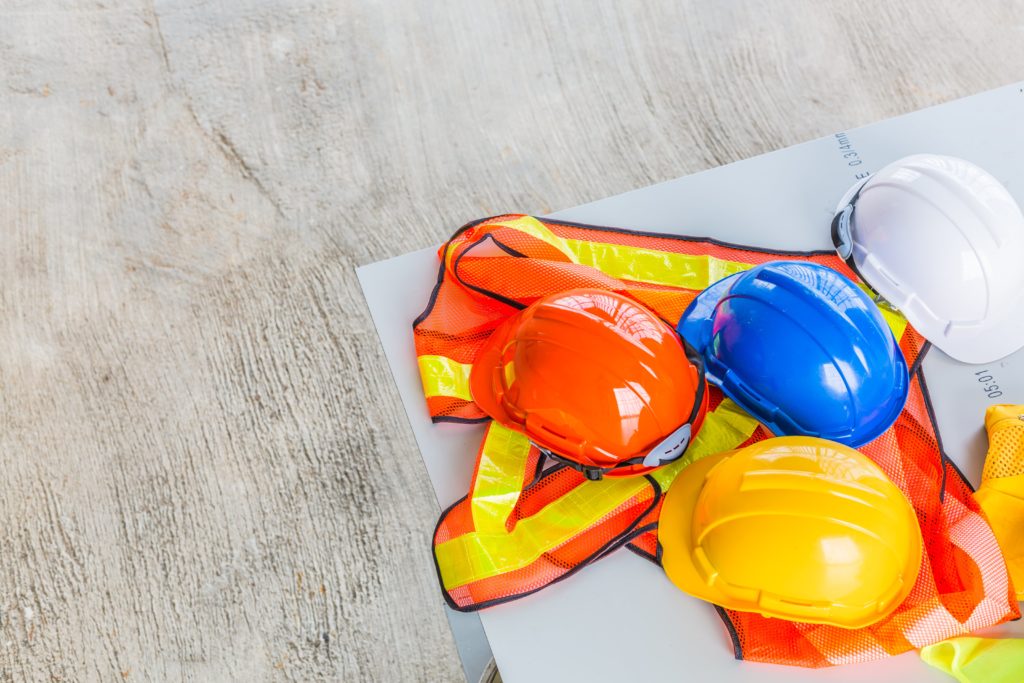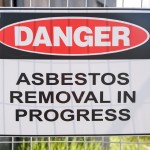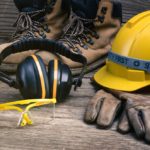Features - Business
Spotting the signs of modern slavery

Awareness of modern slavery is growing. Following campaigns highlighting the problems with the gig economy and migrant workers at risk of exploitation, we speak to Roger Bannister, Chief Executive of the Gangmasters and Labour Abuse Authority (GLAA) about the problem.

Roger Bannister
Would you be happy doing physically demanding manual work for as little as £5 a day? Would you be happy sleeping in a filthy caravan on the site where you work during the day? Would you be happy putting yourself in grave danger by operating machinery you have absolutely no idea how to use safely?
This might sound like something that would never happen in 21st century Britain, a country which abolished slavery hundreds of years ago. However, sadly you would be mistaken. Thousands of workers are exploited and abused each day, every day.
The UK construction sector employs approximately three million people and is one we consider to be a high risk industry for labour exploitation. At the GLAA, we are determined to stamp out some quite frankly inhumane working practices we have come across, and ones you will no doubt have seen in the media.
Earlier this year, we published a report on the nature and scale of labour exploitation across the UK which I would highly recommend you take a look at as it is well worth a read.
In construction, our intelligence reports the involvement of Irish traveller families in the exploitation of workers, particularly in groundwork, paving and driveways. These workers are often also ordered by the families to clean and look after their children in addition to their job.
Pay is a major issue. Some workers receive only £5 a day, while others are not paid at all. This is a particular problem in fencing, maintenance and bricklaying. Most of their wages end up being spent on rent for caravans on the family’s land, with the conditions described as inhumane, unsafe and overcrowded.
Deception and abuse of workers’ self-employed status is also only too common. Migrant workers who may not necessarily understand their employment rights are frequently exploited in this way.
Safety is something which is rarely given a second thought. Serious accidents have occurred where workers have not been given appropriate training to operate machinery. In some cases, compensation has been offered to stop victims talking to the authorities. Unsurprisingly, this is not always paid. According to research by the Health and Safety Executive, the construction industry accounts for 22% of fatal injuries, even though it only accounts for 5% of the UK workforce.
Perhaps the most high-profile recent example of exploitation in the construction sector was the case involving the Rooney traveller family, who were brought to justice following the determination and commitment of my former colleagues at Lincolnshire Police.
The Rooneys enslaved victims including homeless and disabled people before forcing them to work for their driveway resurfacing company. While the workers lived in squalid conditions with little or no pay, the Rooneys lived a life of luxury, enjoying frequent extravagant holidays.
Thankfully, eleven members of the family were jailed for almost 80 years between them last September, with the judge describing their offences as “chilling in their mercilessness”.
This is by no means the only example of real progress in the fight against modern slavery and labour exploitation. In 2017, the GLAA was handed new police-style powers by the government. Our broader remit allows us to tackle abuse across the labour market, search and seize evidence and investigate modern slavery in the workplace. We now also have the ability to go after repeat labour market offenders and rogue businesses.
However, with great power comes great responsibility – I saw that first-hand commanding firearms operations, authorising surveillance and helping plan public order events in Leicester when I was Deputy Chief Constable of Leicestershire Police. Over the last year, we have recruited dozens of highly skilled individuals to our organisation to complement our experienced analysts, investigators and intelligence managers.
The results speak for themselves. In the last 12 months, we have arrested more than 100 people, identified over 1,000 employees suffering direct abuse and launched nearly 200 investigations.
In October 2017 we launched our Construction Protocol, a joint agreement with some of the biggest names in the industry to eradicate slavery and exploitation. We are still seeing organisations sign up to the protocol and pledge their commitment to cracking down on modern slavery in partnership with us.
All this work has been achieved with only around 125 members of staff in the entire organisation. Clearly though with such finite resources, we are reliant on our partnership work with the police, local and central government, charities and employers. And this is where you come in.
You might be thinking ‘What can I do? I’m not a modern slavery expert.’ I appreciate that spotting the signs of modern slavery and labour exploitation is no easy task but there are some useful signs which we can all follow in identifying and preventing abuse. We have six key indicators for spotting the signs of modern slavery and labour exploitation: restricted freedom, behaviour, working conditions, accommodation, finances and appearance.
Restricted freedom can encompass everything from victims not being in possession of their passports, having no access to medical care, being subjected to threats against family members, or never speaking about normal activities outside of work – sometimes the absence of normality is a sign.
Behaviour can be something as relatively innocuous as a worker being unable to speak English fluently. However, it also includes workers having a distrust of the authorities, never leaving their place of work without their boss, and resorting to crime for money or food.
Victims may regularly work excessively long hours, have no days off, be forced to work under certain conditions and lack the ability to choose when or where they work.
If they live in sub-standard accommodation, live in groups where they work, or in other degrading, unsuitable places, they may well be suffering from exploitation.
In terms of financial exploitation, victims may receive little or no payment, have no access to their earnings, or be disciplined through punishment and fines. They can be charged for services they do not want, be forced to open bank accounts and sign documents to receive benefits or loans.
Appearance is probably the easiest sign to spot. Has someone suffered injuries that appear to be the result of an assault? Have they suffered injuries that could be related to someone having control over them? If so, then they very well could be a victim of modern slavery.
Most importantly, please remember to actually act if you spot any of these signs. I realise this might sound clichéd but just one call to us can change people’s lives forever. Exploitation and abuse will only continue if you do nothing – we all have a moral and ethical responsibility to act.
Please speak to our dedicated intelligence team on 0800 4320804 or email intelligence@glaa.gsi.gov.uk if you have any suspicions. We assess every bit of intelligence we receive.
Our website www.gla.gov.uk has more information on labour exploitation and best practice for businesses.
I have only had the privilege of being Chief Executive for a few months but I already see an organisation committed to working really well with reputable, law-abiding organisations, and all those fantastic charities providing support to potential victims.
By working together, we can defeat modern slavery and protect vulnerable workers from labour abuse and exploitation.
If you would like to read more articles like this then please click here
Related Articles
More Features
- Ten years of progress on payment, pre-qualification and skills
19 May 25
The industry has made significant progress on late payment, pre-qualification, and competence since the formation
- Pagabo provides clarity on impacts of new NPPS and PPNs
12 Mar 25
The Labour government’s new National Procurement Policy Statement (NPPS) sets out strategic priorities for public
- How is the Procurement Act going to drive social value
24 Feb 25
The regulations laid out within the Procurement Act 2023 will go live today.






